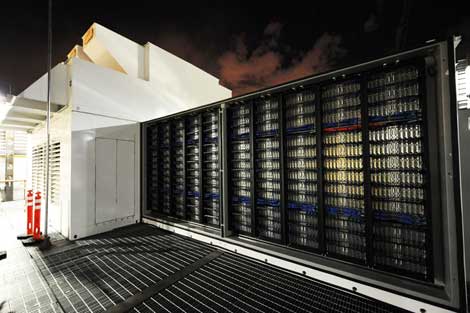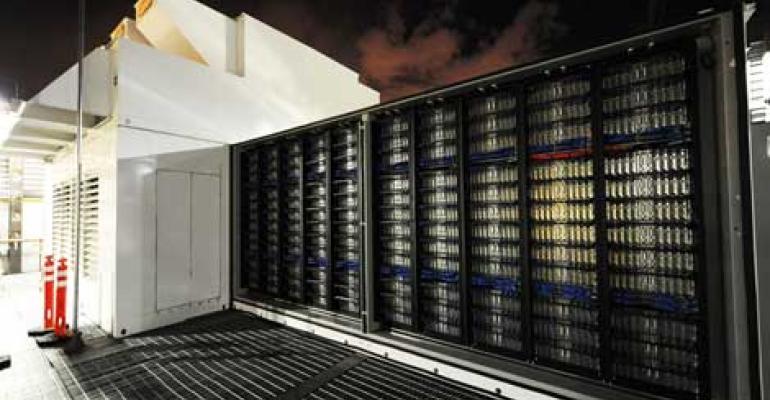
Last week's Schneider-AST deal highlights the modular data center market, where both adoption and competition are on the rise.
Will 2014 finally be the breakout year for pre-fabricated data centers? The year is young, but the modular market has already seen its first major M&A deal, and may soon have its first IPO.
With marquee customers in the hyperscale market, and slow but steady progress with enterprise customers, modular designs continue to gain traction. New players and new designs are emerging, further advancing the potential for pre-fab deployments.
But barriers remain. The ISO container casts a long shadow over the modular data center market. Executives in the sector say it will take additional education, as well as more public customer success stories, before the new breed of modular designs can overcome customer resistance dating to the early days of the "data center in a box."
M&A and IPOs
On Friday, Schneider Electric announced that it had acquired AST Modular, a Barcelona-based modular specialist that has built a global business. The deal reflected the growing importance of pre-fabricated designs and Schneider's ambitions in the modular sector.
The market for modular data centers is also becoming more competitive, with U.K. specialist Bladeroom entering the U.S. market and investment firm Fidelity launching its Centercore design as a product. Late in 2013, IDC Architects announced that it is commercializing a modular design it has deployed for global banking customers, while newcomer NextFort opened a "modular colo" facility near Phoenix..
Meanwhile, IO is hoping to become the first modular specialist to go public. The company has announced plans for an initial public offering, but hasn't yet indicated the date for its IPO. The Phoenix-based provider counts Goldman Sachs among its roster of clients, and is bullish on the outlook for modules as the delivery model for the "software-defined data center."
"The data center market has spoken, and the consensus is that modular has won," said Troy Rutman, the spokesman for IO.
Progress, But Also Resistance
Other executives in the modular sector see pre-fabricated designs making their way into the mainstream more gradually, but say that resistance persists.
"You're deploying a new technology into a mature market that is questioning its delivery," said Rich Hering, Technical Director Mission Critical Facilities at M+W Group. "Most folks don't like change."
“A lot of people believe modular is just for scale-out and low reliability,” said Dave Rotheroe, Distinguished Technologist and Strategist for HP. “It’s not true. Modular designs can and do apply in the enterprise."
"Customers are just beginning to understand what modular allows them to do," said Ty Schmitt, an executive director and fellow at Dell Data Center Solutions. "As the customer base matures and the supply chain matures, we'll see exponential growth."
Early Adopters
Hyperscale cloud builders Google, Microsoft and eBay were among the first earliest users of modular designs. AOL has deployed "micro-modular" data centers both indoors and outdoors. On the enterprise front, Goldman Sachs and Fidelity have been the marquee names embracing pre-fabricated data centers.
Modular designs aren't for everyone, but Schmitt says the concept is being proven with a nucleus of forward-thinking customers seeking cheaper and faster ways to deploy their IT infrastructure.
"It's customers who've transformed their business," said Schmitt. "They're the early adopters. As more and more customers take advantages of software resiliency, we'll see more adoption. It's going to be a series of small hurdles."

Servers packed into a Dell module being deployed at an eBay data center in Phoenix. (Photo: eBay)
"The primary constraint to our technology platform is that it's really a disruptive process within a company," said George Slessman, the CEO of IO. "It requires an enormous shift of technology and culture."
As the modular market matures, designs are becoming more flexible and sophisticated, advancing beyond ISO shipping containers to use a variety of pre-fabricated components to assemble facilities that mirror the look and feel of traditional brick-and-mortar data center halls.
"It has morphed into the delivery of more mature space," said Hering. "They bolt together and become a room. But we have a real problem in talking about modularity, since everyone thinks about containers."
"We have to get out of this containerized concept to have this wide-open space," said Marc Faig, CTO at AST Modular. "I really think this will be a big step."
Refine the Design
"As some of the fear factors and misperceptions go away, minds wil change," said Eric Wells, the head of data center services at Fidelity. "The economic reality is that if you can approach your data center on a just in time basis, you'll be investing your money in wiser way. We've heard a lot of people use the manufacturing analogy. A lot of what we're doing is taking these same (just in time) technologies and applying them to the data center. I think we should minimize the fear factor of modular, because we've been participating in it for a long time."
Wells says the modular approach enables faster innovation, with new refinements being added on an ongoing basis..
"This approach has to be iterative," said Wells. "If you look at it as a software release, you learn lessons and implement them in version 2. The biggest lesson learned is about how much time we have to spend educating internal and external audiences about what we're doing. We didn't realize how much education we'd need to do with stakeholders."
"We spend an enormous amount of energy to educate partners," said Schmitt. "We have a good five to six years of data that the industry can look at and say whether it's ready to make this big jump."
Making the Business Case
Historically, the shortage of reference customers has been a challenge for pre-fabricated data centers. Over the past year, the debate has advanced from research reports on modular economics to real-world case studies from marquee enterprise brands.
"The decision to go with modular data center technology is all about the business case," said IO's Rutman. "We are allocating substantial resources toward the creation of sophisticated financial models that will help customers calculate cost benefits over time, and the IO.Applied Intelligence team is working closely with McLaren Applied Technologies on predictive analytics that improve data center performance.”
"We all perceive that modules are cheaper," said AST's Faig. "Demonstrating this to the market is really important. We have some homework to do. We have to demonstrate the reality and not just the perception of our market."





